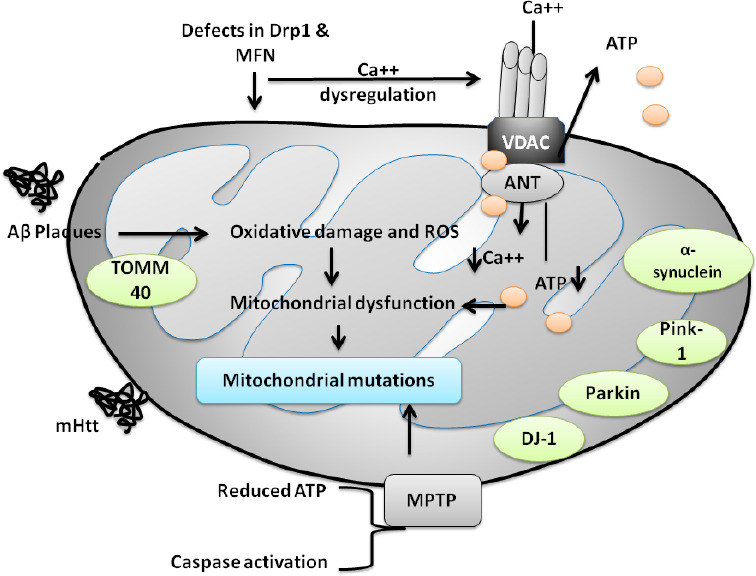Figure 1.

Diagrammatic representation of the pathways involved in mitochondrial dysfunction in neurodegenerative disorders.
MPTP-induced PD is a well-established model for PD. The figure shows the mechanism involved in mitochondrial dysfunction concerning MPTP. MPTP may induce alterations in ATP production, activation of apoptotic pathways, and mutational changes in DJ-1, parkin, PINK-1, α-synuclein. mHtt is associated with mutational changes in HD, mHtt worsens the disease condition by increasing the generation of ROS and oxidative load. In the case of AD, Aβ plaque accumulation is a key contributor in disease progression and development and activates various oxidative stress markers, which may possess the capability to alter mitochondrial fission proteins such as Drp1, MFN. Modifications in Drp1, MFN further causes activation of several other pathways including dysregulation in calcium hemostasis, reduction in ATP production that are considered to be important pathways involved in mitochondrial abnormalities, dysfunction, and mutational changes. Aβ: Amyloid-beta; AD: Alzheimer’s disease; DJ-1: protein deglycase; Drp 1: dynamin-related protein 1; Drp1: dynamin related protein; HD: Huntington’s disease; MFN: mitofusin; mHtt: mutant huntingtin; MPTP: 1-methyl-4-phenyl-1,2,3,6-tetrahydropyridine; OXPHOS: oxidative phosphorylation; PD: Parkinson’s disease.
